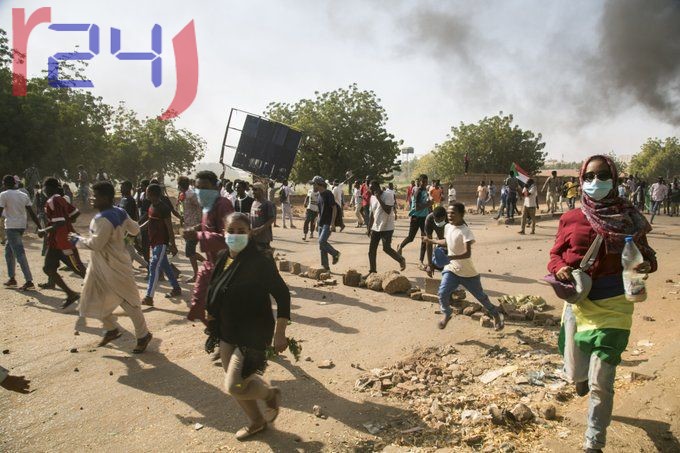Darfur24-Nairobi
Prosecute Killings, Prioritize Security Sector Reforms
Human Rights Watch HRW said today, that Sudanese authorities used excessive force, including lethal force, against protesters on October 15, 2020, leading to the deaths of seven protesters, including a 16-year old boy, as well as a security official, Human Rights Watch said today. About 25 people were injured, most from bullet wounds.
The protests took place in the town of Kassala two days after the prime minister, Abdallah Hamdok, dismissed the governor of Kassala state, Saleh Amar. This followed weeks of unrest between members of Amar’s Beni Amar tribe and members of the Hadandawa tribe, who opposed his appointment.
“Sudan’s transitional authorities should make clear that security forces are not above the law by promptly and strictly holding to account all those who violate it,” said Ida Sawyer, deputy Africa director at Human Rights Watch. “The people of Sudan should be able to exercise their right to peaceful protest without fearing for their lives.
” Human Rights Watch interviewed 11 witnesses, including doctors, about the events in Kassala by phone and reviewed video footage, photographs, and forensic reports.
On October 15, protesters gathered in Kassala’s main square to hear speeches, and around mid-morning, some protesters headed toward the state government building, near the al-Gash bridge, which connects the western and eastern parts of the town. At this intersection, security forces consisting of the Central Reserve Police (CRP), the Rapid Support Forces (RSF), and the Sudan Armed Forces (SAF) tried to stop the protesters by firing live ammunition and teargas into the air. After the initial confrontation, police officers who had been stationed on a side street, fired directly at protesters killing two, including Abdalla Hussein Abubaker, 16.
A 24-year-old protester told Human Rights Watch:
I could see security forces stationed ahead of us, near the entrance of al-Gash bridge and state government building , almost 500-700 meters away. There we started hearing gunshots followed by teargas. I saw SAF soldiers shooting in the air. Suddenly, gunshots increased, and i could hear people around me saying some protesters had been hit.
The second stand-off happened outside the hospital where wounded protestors were being treated. CRP forces fired teargas at crowds gathered outside the hospital, many of whom came to donate blood. One witness said that teargas canisters were shot into the hospital. In response, protesters erected barricades at the approach to the hospital entrance.
Shortly afterward, three RSF vehicles, one of which carried the body of a dead soldier, sought access to the hospital, but protesters refused to allow the vehicles to approach the building entrance, a journalist interviewed said. Tensions mounted. Two videos, analyzed by Human Rights Watch, show the RSF vehicles reversing to move out of a crowd of protesters. One vehicle begins to turn around while people inside the vehicle can be seen shooting in the direction of the protestors. Witnesses said five people were killed.
A journalist at the scene said:
I immediately ran to find shelter behind the walls of a pharmacy near the hospital. One protester was near me and I was holding him, urging him not to expose himself to RSF. He ran out from our shelter. Seconds later, I heard a gunshot and saw him falling down with blood covering his clothes and chest. I ran toward his body. With a few others we carried him to the hospital. There the doctors said he was dead.
Human Rights Watch is concerned that Sudan relies too heavily on military or militarized forces for crowd control, and that those forces are either not properly trained in law enforcement tactics or fail to use them, instead using excessive and lethal force. In particular the forces fail to recognize their obligations to respect, protect, and fa

